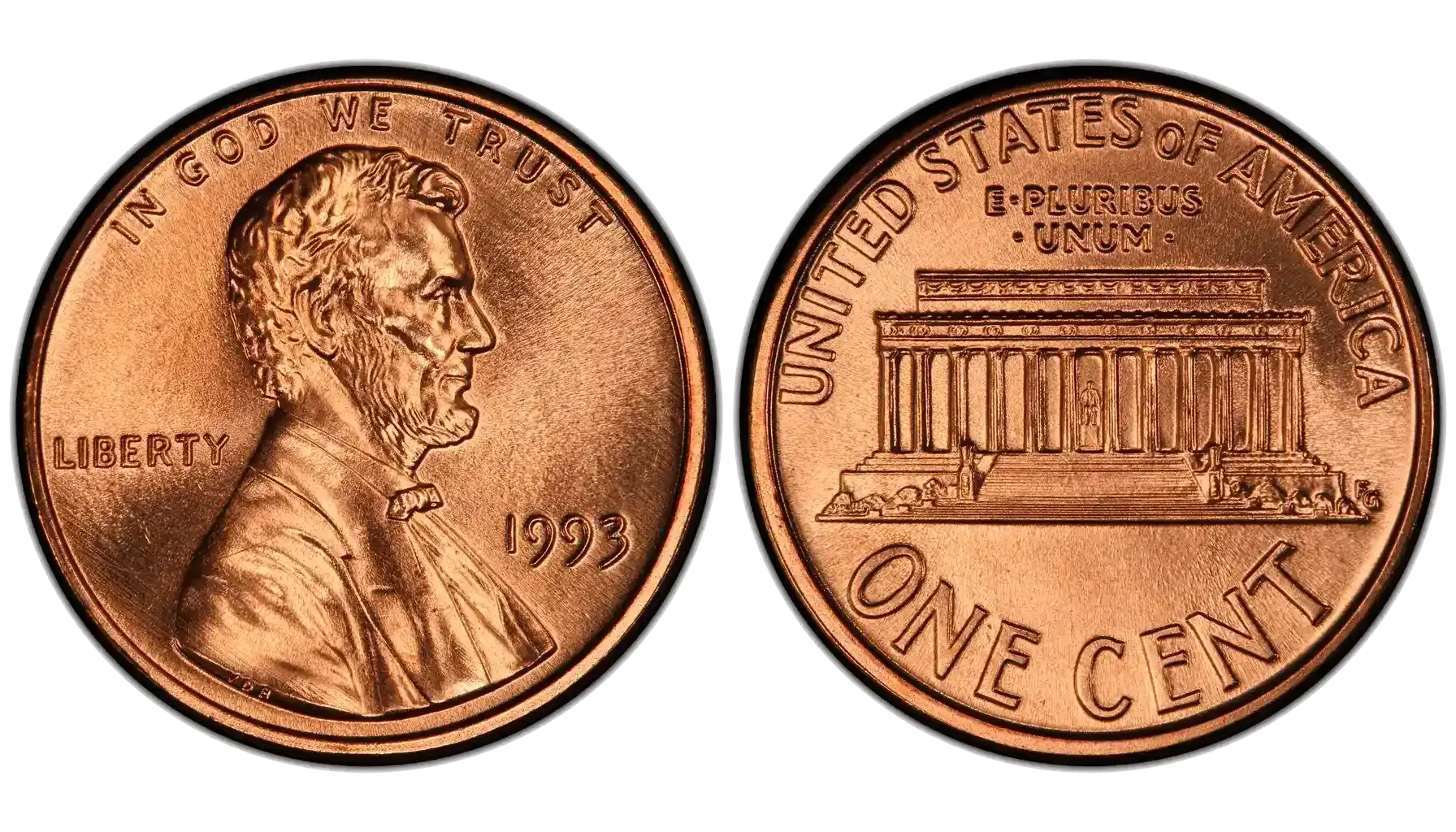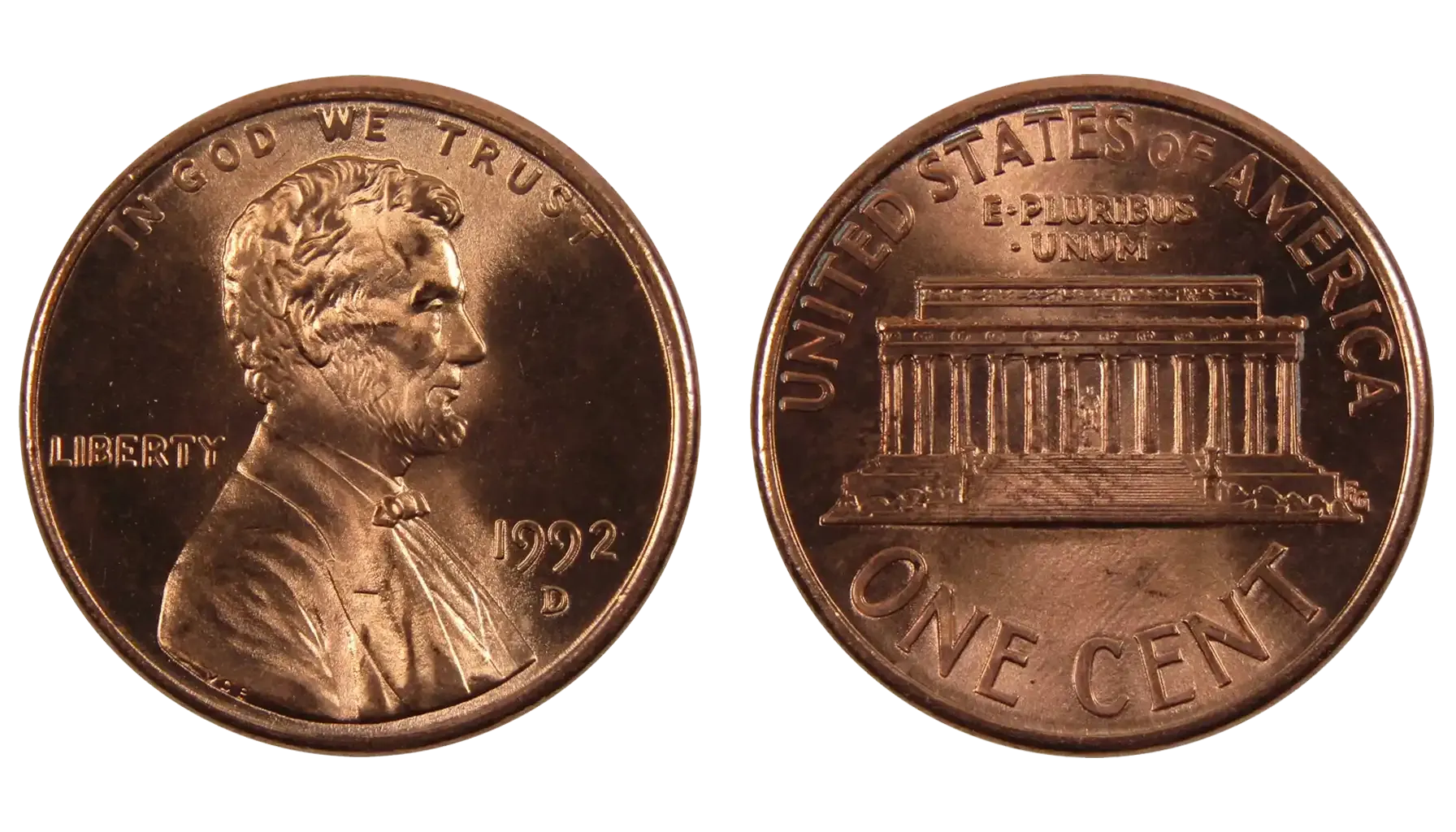Contents:
What if someone told you that an ordinary coin might bear a hidden treasure trapped deep inside? Indeed, the 1972 Eisenhower dollar cannot be considered the most glamorous piece of the numismatic sphere in the US; nevertheless, its peculiar deviations and inconsistencies may turn casual items into rarities.
How much is a 1972 silver dollar worth? What is peculiar about its types and varieties, and why obtaining these coins might be overwhelming? Explore the silver dollar instances from the perspective of a professional coin hunter and identify coins and their values smoothly from now on. Yes, it might not have reached the heights of numismatic fame, yet it is not far from worthy.

The Great Illusion: Silver or Not?
For those who might have held a newly struck Eisenhower dollar in 1972, this coin represented the weight of history, a tribute to a beloved commander, and a legacy of the moon landing. But did the weight of silver feel heavy to you? Most likely not. A master of deception, the 1972 Eisenhower dollar whispers "silver" but does not always live up to the hype.
Despite being called "silver dollars," most 1972 Eisenhower dollars are completely devoid of silver. Made for common use, these coins mainly consist of copper and nickel, which is significantly different from the precious metal that their name implies. These were made by two major mints in the US, i.e., the Denver (1972 D Silver Dollar ) and Philadelphia (1972 Silver Dollar No Mint Mark).
The illusion does not stop there, though. The 40% silver-clad Eisenhower silver dollar 1972 made at the San Francisco Mint (with a "S" mint mark) is a a special type that does include silver. These were collector's items, offered in brown-box "proof" or blue-pack "uncirculated" sets, and were never intended for the stresses of daily commerce.
Although a 1972 Eisenhower dollar from Philadelphia or Denver may appear to be similar to its San Francisco counterpart to the untrained eye, one has inherent worth while the other only serves as a prop.
Related article: Value of 1943 Steel Pennies.
The Shape-Shifting Coin: Three Types in One Year
The Eisenhower dollar from 1972 was not a universal unit of currency, though it comprised three different types at the same time. So, what should we know about its three versions, and what makes a 1972 silver dollar rare?
Here, we should emphasize the appearance of the reverse side which features an eagle with an olive branch and the planet Earth in the background. And the most distinctive aspects, i.e., the globe's shape and its surface, changed three times in minor but significant ways which could have affected the 1972 silver dollar value as well.
1972 Silver Dollar Type 1
Value: $1.50 - $10 (circulated); $50+ (MS65 or higher)
The Earth in Type 1, i.e., the initial type, is low-relief and a bit blurry. The globe appears to be still forming at first glance, seeming pale and nearly undefinable. This was the original design, which was not meant to fulfill the upcoming requirements of coinage. For many collectors, it is a rough and incomplete representation of what should have been the planet, for the elaborate details of the continents are hardly discernible.
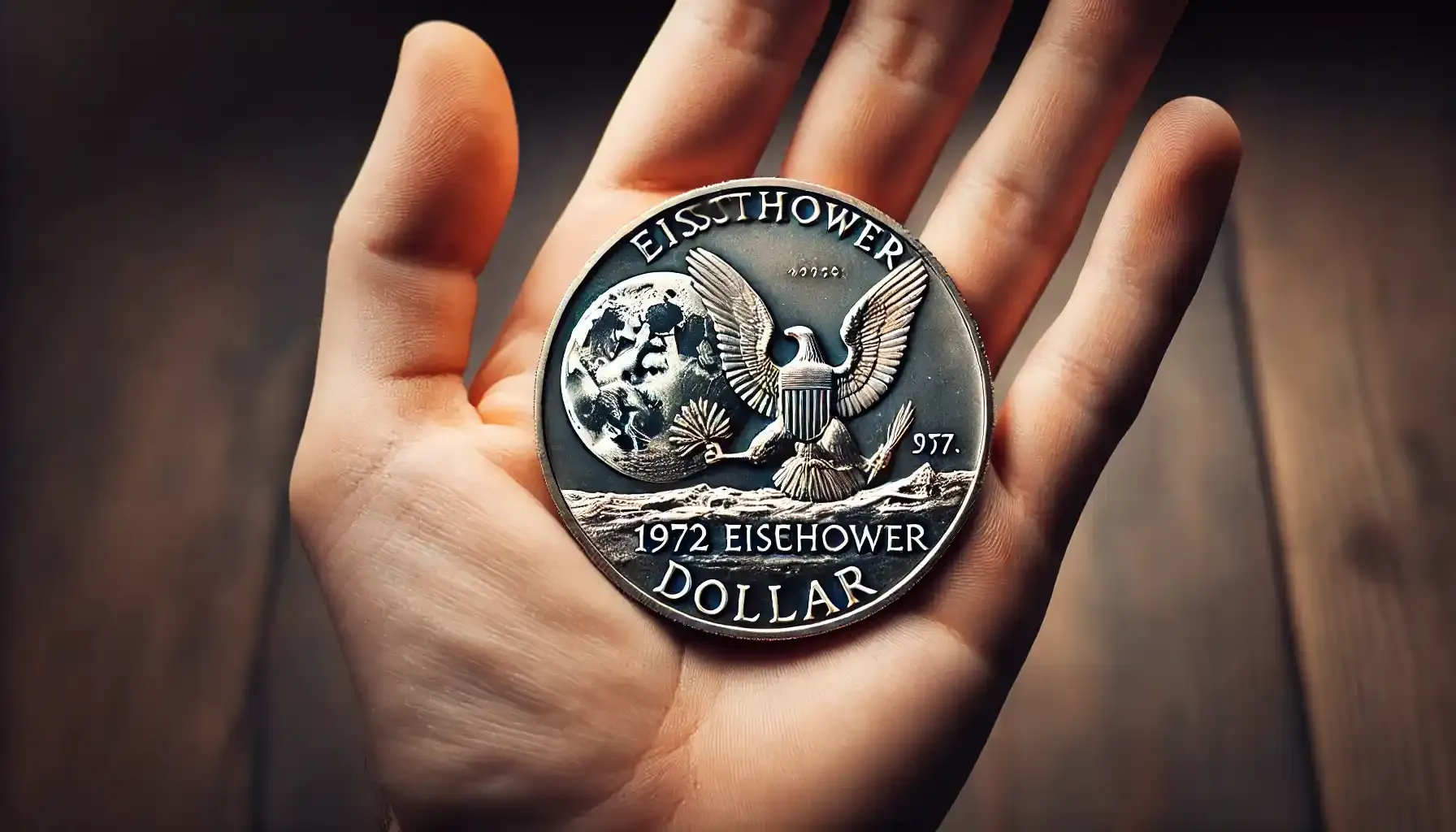
1972 Silver Dollar Type 2
Value: $30 - $200 (circulated); $1,000+ (MS65 or higher)
Here comes Type 2, a coin that indicates the change in style. In this very case, the Earth's relief is higher, the continents are more distinct, and the planet as a whole is considerably more visible. But when compared to the other versions, this type is more uncommon.
As a result of the rapid change in the dies utilized for minting, there were produced fewer Type 2 coins than expected. If you are fortunate enough to obtain one in good shape, congratulations! You have managed to find a real treasure, i.e., an almost flawless example of the coin's evolution.
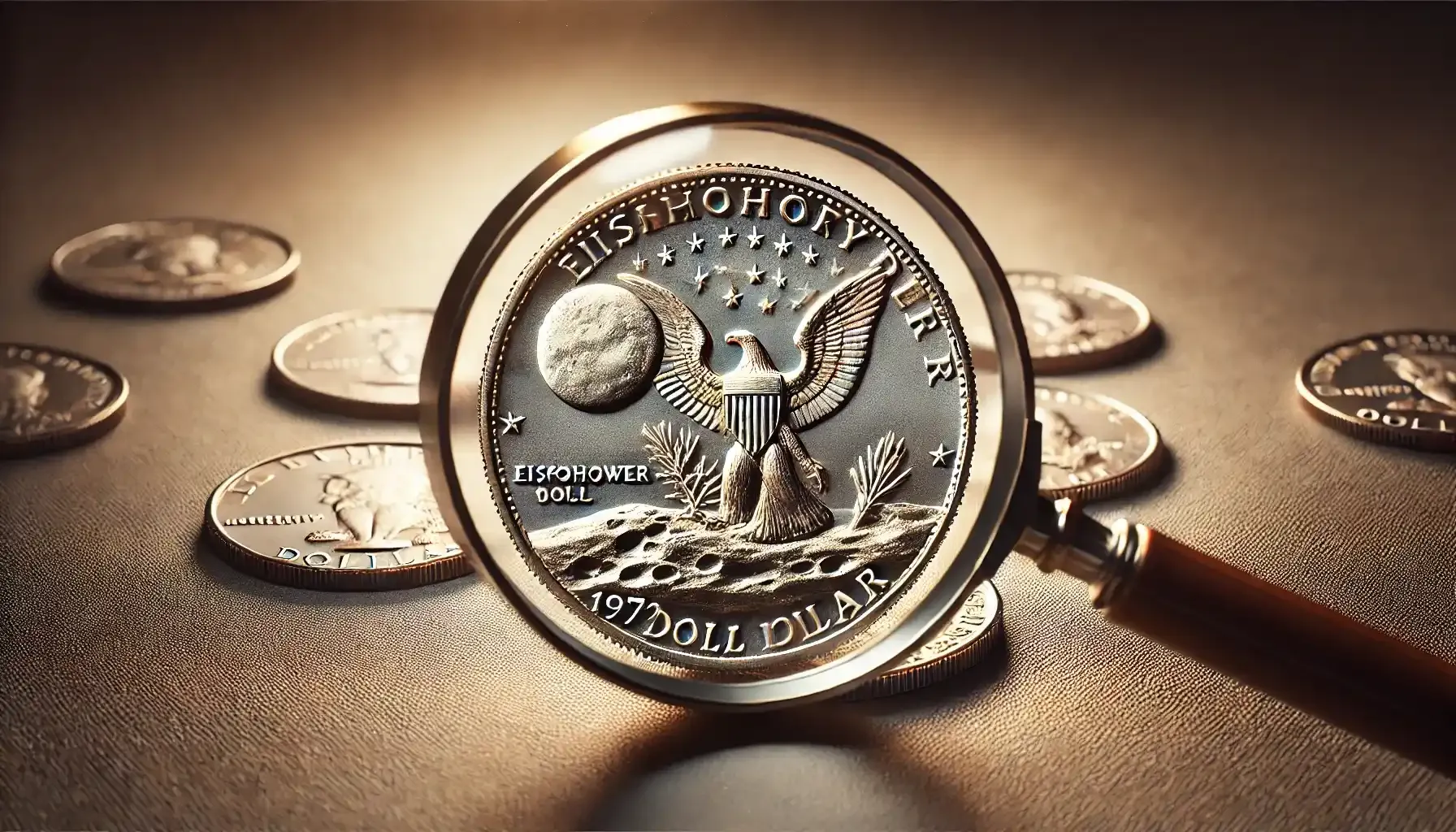
1972 Silver Dollar Type 3
Value: $2 - $15 (circulated); $60+ (MS65 or higher)
The time has passed, and a new design was finally born. With well-defined continents and a more perceptible appearance in general, the Earth's shape was enhanced for good. While this type is the most often used variety these days, it still retains the heritage of the earlier experimental designs as it is the final production die used for the majority of the coins in circulation in 1972.
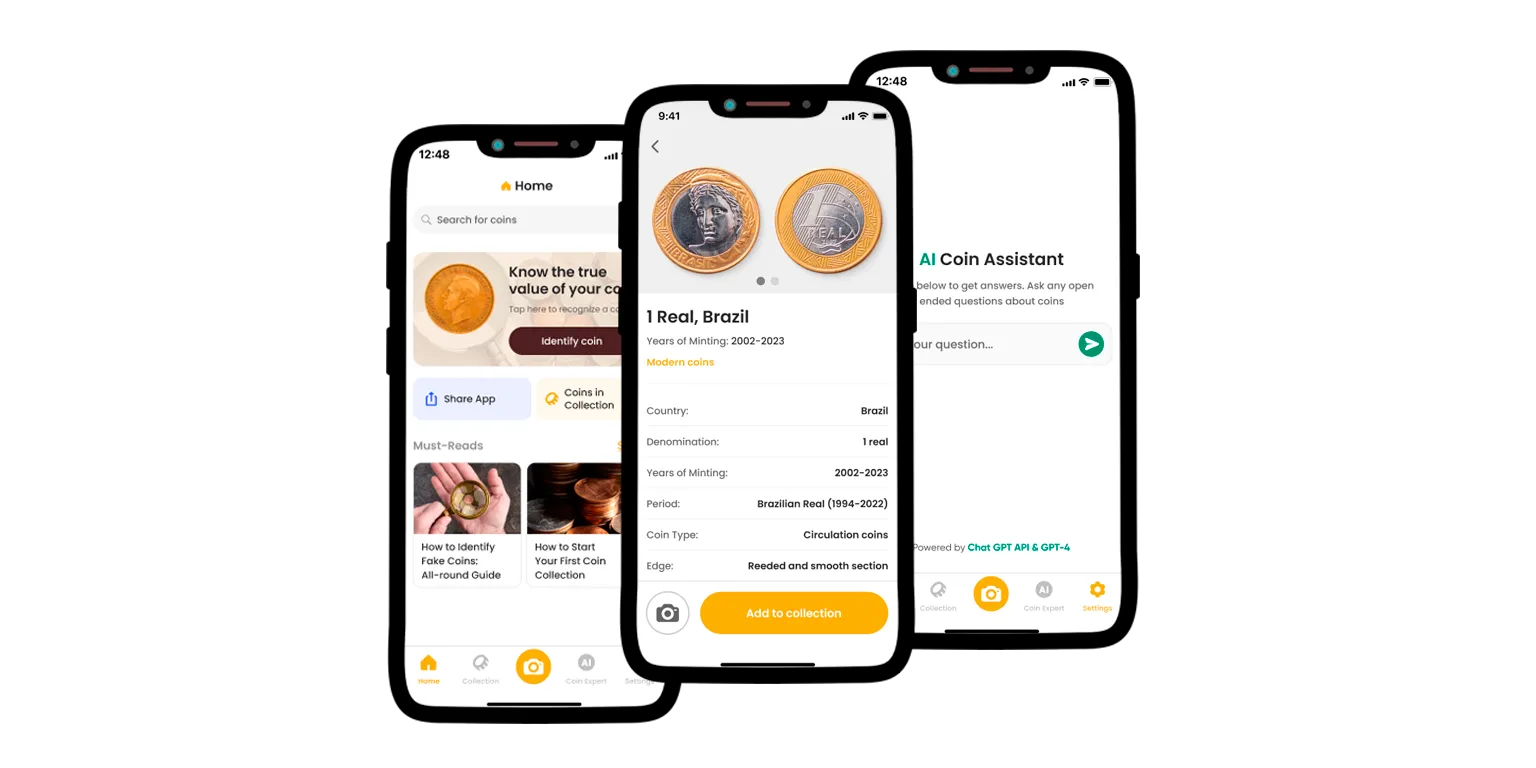
How to Identify and Collect Eisenhower 1972 Silver Dollar?
The first step to take when building a lucrative collection of the 1972 Eisenhower silver dollar is correctly identifying it on the spot. So, which features should one pay attention to so as to determine the type of the coin and the 1972 silver dollar worth, too? Let us see.
Key Features of the Eisenhower Silver Dollar 1972
Obverse Design: Frank Gasparro's portrait of President Dwight D. Eisenhower became the face of the 1972 Eisenhower dollar. With his face in profile (i.e., facing left), the coin also includes inscriptions like "LIBERTY" above and "IN GOD WE TRUST" below, while the date "1972" is positioned to the left of Eisenhower's picture.
Reverse Design: As such, the reverse displays the Earth in the background, along with a fearless eagle in flight clutching an olive branch. The words "UNITED STATES OF AMERICA," "E PLURIBUS UNUM," and "ONE DOLLAR" are also positioned there, on the reverse.
Metal Composition: As for its composition, the typical 1972 Eisenhower dollar weighs 22.68 grams and has a diameter of 38.1 mm. What is also surprising is that only proof and uncirculated sets of the unique 40% silver. The composition of these silver coins makes them even more precious.
Tools for Identification: Coin ID Scanner
Sometimes, when the rest seems to be obvious, one may be misguided and overwhelmed to determine what type of coin they own. What if they have a rare 1943 copper penny? The easiest and fastest way to detect an instance and successfully incorporate it into any collection is to appeal to additional tools like Coin ID Scanner to get immediate help and assistance at every stage of a coin hunt. So, what can you do with this app?
Scan the Coin
Position your smartphone in a way that the coin is clearly visible. With the necessary permissions granted, the app is to examine important characteristics like weight, size, and marks to define the origin and type of a coin.
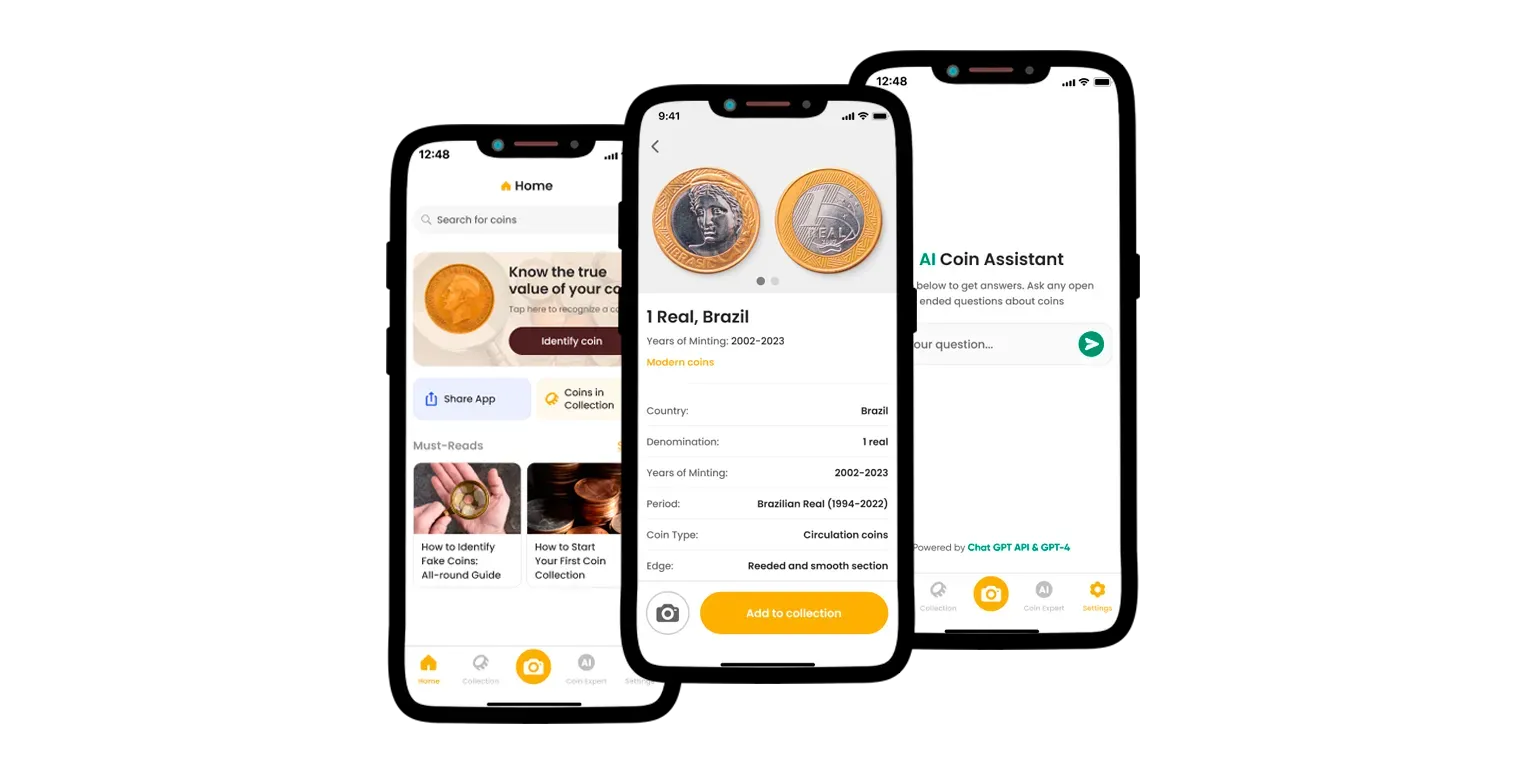
Examine the Results
Based on the coin's appearance, the Coin ID Scanner will tell you if it is a silver or copper-nickel issue. If a mint mark is present, it will be noticeable, allowing you to determine if it comes from the San Francisco, Denver, or Philadelphia mints. By the way, where is the mint mark on a 1972 silver dollar? Well, it is located on the obverse side, directly below Eisenhower's neck (just above the date).
Error Detection
What is more, the Coin ID Scanner app is also capable of detecting typical minting errors, including clipped planchets, off-center strikes, and double die strikes. With the use of this tool, you can rapidly determine whether your coin possesses any unique qualities that could raise its worth for good.
1972 Silver Dollar Errors to Note
Double Die Obverse and Reverse
Value: $50 - $150
When the die strikes the coin more than once, it might result in a double die mistake, which has the indicative dates or inscriptions with doubled effect. As a rule, the most common error refers to a double die obverse, which is quite collectible since it has the year "1972" duplicated.
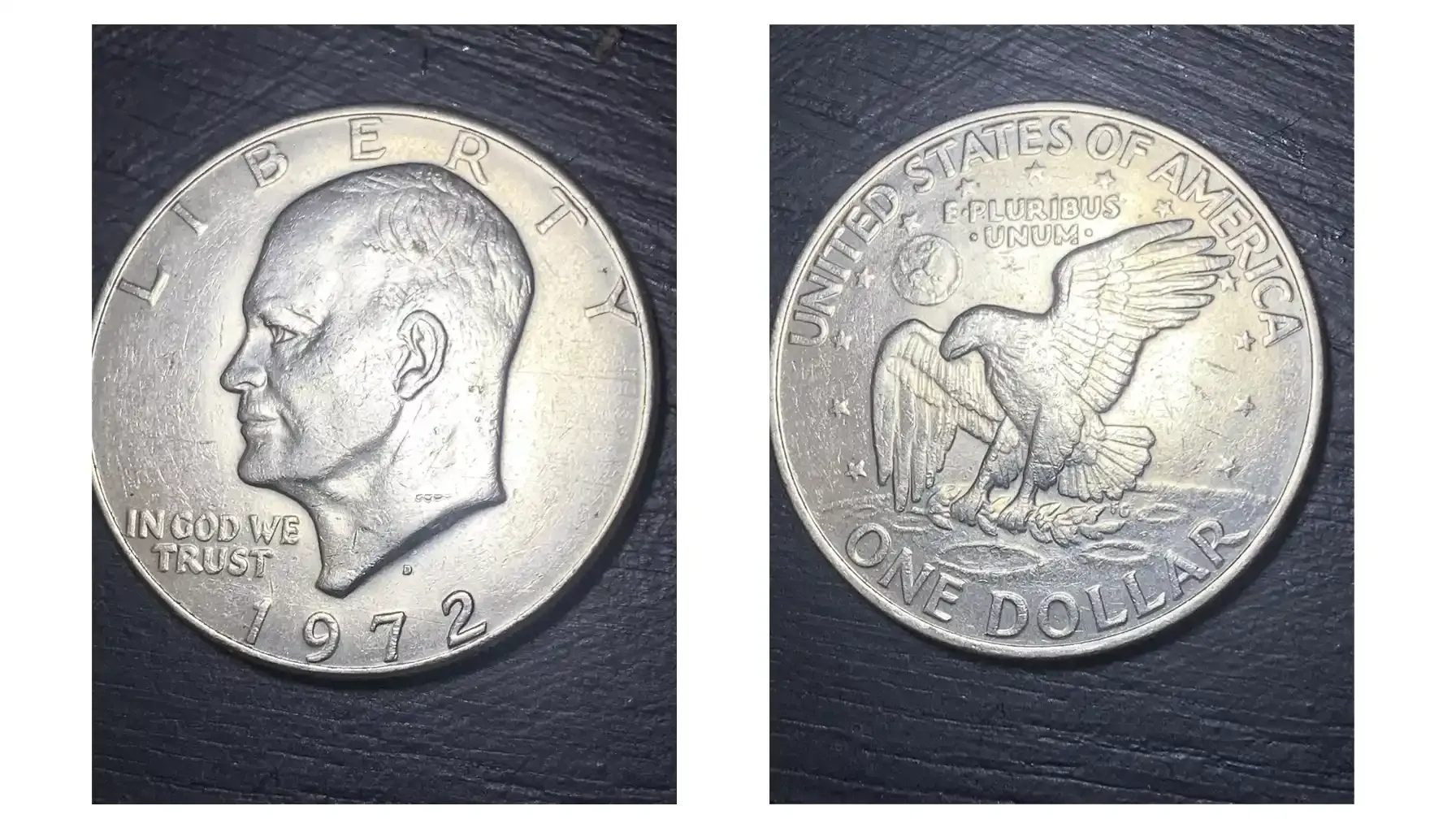
Off-Center Strikes
Value: $75 - $300
When the coin is not properly oriented during the minting process, an area of the pattern might be chopped off, which is to result in an off-center strike. Coins with off-center strikes are considered more valuable than other deviations, particularly if large parts of the design are absent.
Clipped Planchets
Value: $50 - $200
Generally speaking, coins with uneven edges are usually called clipped planchets, which are produced when the blank metal is cut incorrectly.
Wrong Planchet Errors
Value: $500 - $1,500+
When a coin is struck on a planchet intended for a different denomination, e.g., a quarter or a dime, this is known as an incorrect planchet error. These coins will be rare and precious since they are planned to be smaller and boast a distinctive look in the end.
Die Cracks and Cuds
Value: $20 - $100
Cuds are elevated blobs created if a part of the die is broken, whereas die cracks are raised lines caused by a crack in the die. Both are quite collectible, though the value might fluctuate unexpectedly.
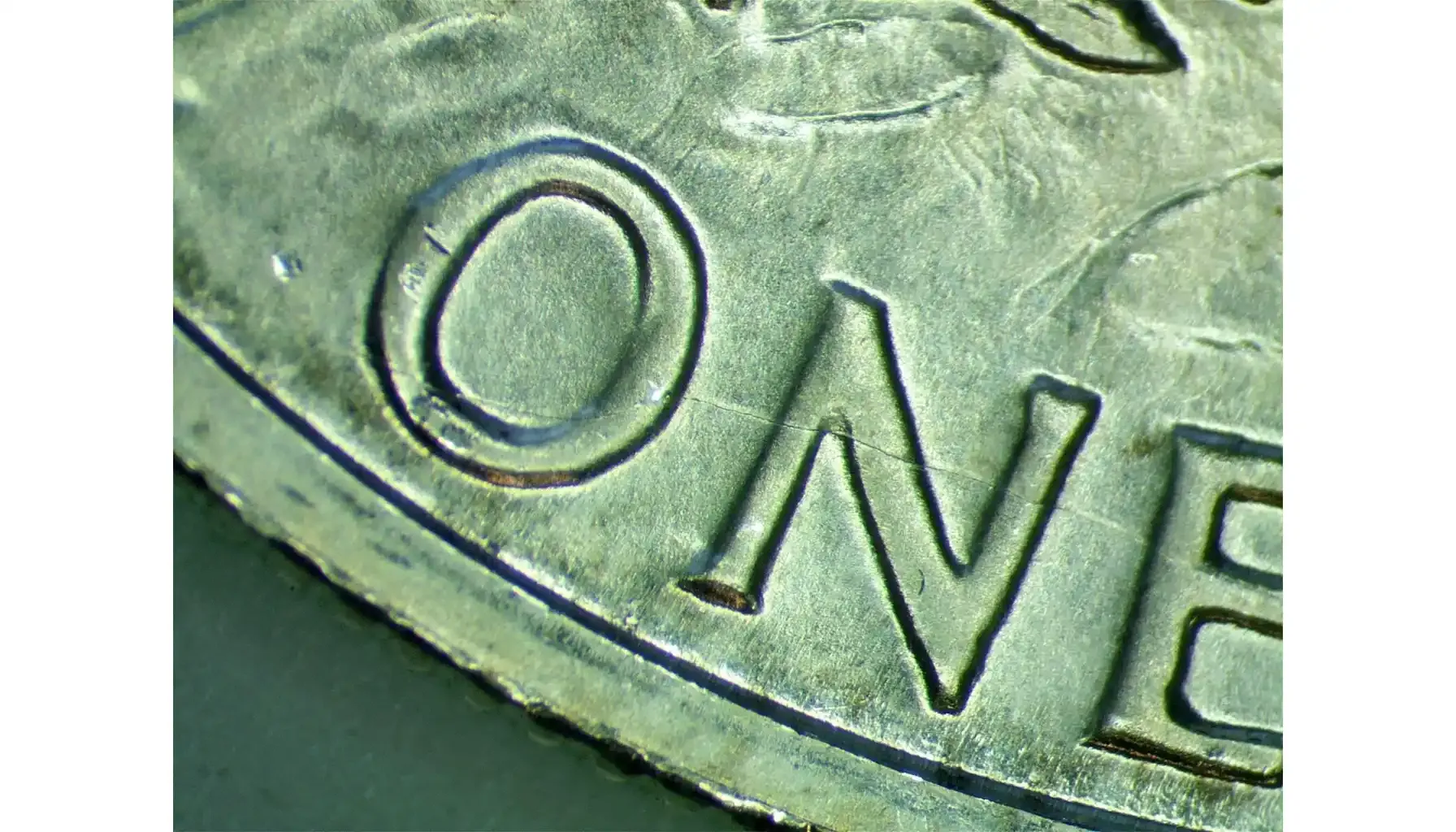
Are You Looking Closely Enough?
The appearance is always the most indicative problem of a coin, yet the 1972 Eisenhower dollar is different. Only those who pay attention to the details will be able to uncover the secrets of this coin, which has three different varieties and intriguing errors to spot.
Every finding has the potential to become a valuable asset, but the extent might be defined by one's attention to detail only. Examine your coins carefully before throwing them away – this is how you might find a real treasure that is worth much more than its face value.

